Ontology Modeling of Social Roles of Users in Mobile Computing Environments
Volume 3, Issue 2, Page No 319-328, 2018
Author’s Name: Daniel Ekpenyong Asuquo, Patience Usoro Usipa)
View Affiliations
University of Uyo, Computer Science Department, Faculty of Science, 520003, Uyo, Nigeria
a)Author to whom correspondence should be addressed. E-mail: patceeng@gmail.com
Adv. Sci. Technol. Eng. Syst. J. 3(2), 319-328 (2018); ![]() DOI: 10.25046/aj030235
DOI: 10.25046/aj030235
Keywords: Context Representation, Quality of Service, Semantic Approach, Mobile Communication Network
Export Citations
Today, computing devices of various types with wireless interconnections are used for diverse tasks and increasingly in ad hoc manners. It is not always obvious which devices are present, reachable, and connected when users and their devices are mobile. In such mobile computing environment, the number of registered lines on the network via network operators cannot qualify a user to carry out any service due to the unpredictable service quality (SQ), dynamic user context and the device in use. To properly manage the SQ, there is need to specify the roles applicable to mobile devices to effectively utilize the constrained and shared resources for the feature-rich applications. The user’s context may change and adaptation to changing behavior, resource usage, and security settings also pose problems. This paper presents the use of semantic web approach in modeling ontology for a richer knowledge representation of users’ activities and social roles on mobile devices. The developed ontology for users’ social roles was implemented in Protégé to determine whether a mobile user with its interaction medium has a functional capability for specific social role or not. The importance on the use of context in interactive applications is shown and a proposed framework for development of context-aware applications is developed. Results revealed that the approach can effectively enhance partnership between mobile operators and content providers of next generation wireless networks for the provision of value-added mobile web services.
Received: 30 January 2018, Accepted: 14 March 2018, Published Online: 25 April 2018
1. Introduction
Increased advances in mobile communications networks and its integration with web services for different application domains has resulted in proliferation of mobile web services. Mobile web services are defined as web services that are deployed on mobile devices and are published over the Internet, wireless network or within the operators’ network [1]. Their goal is to offer new personalized services to users on their mobile devices such as mobile phones, personal digital assistants (PDAs) as well as laptop computers. In such environment, the context of a user (e.g. location, time, system resources, network state, user’s activity, battery power level, etc.) is highly dynamic, and granting a user access without considering his current context can result in challenging situations. This is because individuals change in behaviour in different settings. However, there is relatively less developed research on factors affecting device usage based on the user’s context and individual characteristics that arise from social environment [2, 3, 4]. According to [5], persona oriented research is a human computer interaction technique which offers a research paradigm that provides a ground on modeling individuals’ behaviour and usage of the mobile phone. Since mobile phones are social devices, context specific research has the potential of significantly providing a more rational understanding of the factors influencing device usage and adoption of associated services at home, school, market, worship or work place, etc. Furthermore, the ability of mobile devices to handle multiple tasks and media types can facilitate mobile learning for information seeking subscribers and content delivery by content providers and mobile operators. Therefore, the developed content-based services will depend on the interaction capabilities of the device, the usage habits of the subscriber and the considered contextual information.
Existing research involving adaptive user modeling for personalized services in the emerging areas of mobile and ubiquitous computing is limited. In [7], the author considered using social paradigms in smart cities for mobile context-aware computing but his approach was not ontology based. However, in [4], the authors used ontology to model user mobility and not social roles. This paper presents an ontology-based context-awareness model for context representation of mobile service contents that supports ubiquitous learning. This is expected to strengthen partnership between mobile operators and content providers.In [6], the authors classified personal digital assistants (PDAs), mobile phones, and Personal Media Players (PMPs) as mobile devices excluding tablets and laptop computers because tablets and laptops give relatively the same functionality as desktop computers and are more portable than mobile. Another reason is that they can easily be brought anywhere but not accessed anytime because of their bulky nature and relative start up time. In a typical mobile computing model, computation does not occur at a single location in a single context, as in desktop computing, but rather spans a multitude of situations and locations covering the office, meeting room, home, airport, hotel, classroom, market, bus, etc. Users might access their computing resources from wireless portable machines and also through stationary devices and computers connected to local area networks. This collection of mobile and stationary computing devices that are communicating and cooperating on the user’s behalf is called a mobile distributed computing system. This form of computing is broader than mobile computing because it concerns mobile people not just mobile computers. These systems aim to provide ubiquitous access to information, communication, and computation. One significant aspect of this emerging mode of computing is the constantly changing execution environment. The processors available for a task, the devices accessible for user input and display, the network capacity, connectivity, and costs may all change over time and place. In short, the hardware configuration is continually changing. Similarly, the computer user may move from one location to another, joining and leaving groups of people, and frequently interacting with computers while in changing social situations.
The rest of the paper is structured as follows. Section 2 reviews literature on context and context-awareness models with emphasis on Ontology models. Section 3 presents the ontology modeling approach for mobile users’ social role as well as a framework for provisioning of context-aware services to mobile users. In section 4, the developed ontology model is implemented in protégé-OWL and results discussed while section 5 summarizes and concludes the work in this paper.
2. Context and context-awareness models
In [8], the authors proposed the concept of context-aware ubiquitous learning to emphasize the characteristics of learning the ‘right content’ at the ‘right time’ and ‘right place’, and also to facilitate a seamless ubiquitous learning environment that supports learning without constraints of time or place. This concept requires the detection of learner changing context information to provide different learning content via mobile devices [9]. In [10], the authors showed that mobile context-aware computing is an essential component of the ‘smart cities’ infrastructure, where a collection of smart computing infrastructure including the new generation of integrated hardware, software and network technologies that provide a real-time awareness of the real-world, and actions that optimize business processes are required [11]. Such smart cities rely on the vision of ubiquitous computing whereby devices can communicate with each other to provide services and information to end users [12]. Therefore, the interaction capability that the current encoding demands on mobile platforms when navigating and getting information is a challenge that must be addressed. Improved representation of content for mobile services is required with new service provision models for more personalized and value added services. It is observed that semantic web technology can handle this challenge by creating a machine process-able web capable of providing a unique value proposition for the advancement of mobile services provision models [13, 14].
Context has been described differently by different authors [15,16,17] as no single definition of context exists. Nevertheless, In [18], the author defined context as any information that can be used to characterize the situation of an entity that is considered relevant to the interaction between a user and an application, including the user and the application themselves. An entity could be a person, a place or an object while information refers to any particular element or detailed piece of data that allows for the description of any condition or state of the participating entities. Context-awareness is a mobile computing paradigm in which applications can discover and take advantage of contextual information such as user location, time of day, neighbouring users and devices, and user activity [19]. In [20], the authors identified location, identity, time, and activity as primary context types for characterizing the situation of a particular entity. They showed that the primary pieces of context for one entity can be used as indices to find secondary context (e.g. phone number, email addresses, birthday, list of friends, relationship to other people, etc.) for that same entity as well as primary context for other related entities in the same location. With these conceptual definitions, an application developer can enumerate the context for a given application.
A system that can extract, interpret, use context information and adapt its functionalities to the current context is said to be context-aware. The challenge is to create a system that will adapt to the set of constraints imposed by the corresponding context of use. These constraints are set by various internal and external factors or dimensions of context [21] as shown on Table 1. Table 1 gives four primary context types – identity, location, time, and activity, for characterizing the situation of a particular entity. It includes specific context information of a user such as in a social environment, where a user may be in a public or private place or in a group setting. The idea is that people’s actions are often predicted by their situation and contextual information and commands aim to exploit this fact. Different results from queries on contextual information can be produced based on the context they are issued. Also, whatever activity is performed will depend on its goals and tasks as well as the tools and resources needed to perform them. The infrastructure deployed will be affected by available communication bandwidth, cost and network connectivity while the product design will greatly be influenced by the physical features of the device and the digital capabilities embedded for its functionality. The location of the user specifically include temporal (date, time, etc) and spatial (position, orientation, and movement) context. Context-aware computing has been applied to different application domains and scenarios. For example, in [22], two applications, AwarePhone and AwareMedia were developed from AWARE architecture to support context sensing and management regarding the working context of users. AwarePhone provides context information about colleagues and workplaces while the AwareMedia acts as a whiteboard system for cooperation in workplaces. Similarly, in [23], the authors described a prototyped context-aware messenger called ConaMSN, which uses context information (emotion, stress, activity) obtained from wearable sensors (using probabilistic methods) and shares it among the application users.
Table 1 Dimensions of context
| Dimension | Description |
| Internal | Users profile: beliefs, previous experience, physical and emotional state
Social environment: work context, business processes (i.e. private, public, group) Activity: goals, tasks, tools, resources |
| External | Physical environment: noise and illumination level, weather conditions, proximity to other objects
Infrastructure: bandwidth, network connectivity, cost Location: spatial (orientation, position, velocity) and temporal (time, date, season) Device technology: physical and digital properties |
The lack of conceptual models and tools to support the rapid development of rich context-aware applications for empirical investigation of interaction design and the social implications of context-aware computing is a challenge. Essentially, a context-awareness model is required to define and store context information in a machine-readable form. In [24], the authors summarized the most relevant context-modeling approaches based on data structures used for representing and exchanging contextual information in their respective systems. These include key-value models, mark-up models, graphical models, object-oriented models, logic-based models, and ontology models, etc. The key-value models are the simplest data structure for context modeling and are frequently used in various service frameworks where key-value pairs are used to describe the capabilities of a service. Service discovery is then applied with matching algorithms which use these key-value pairs. Key-value modeling does not support knowledge sharing across different systems. The mark-up models use a hierarchical data structure comprising mark-up tags, attributes and content to create profiles. Mark-up modeling approach is difficult and non-intuitive to capture complex contextual relationships and constraints. The graphical models make use of unified modeling language (UML) in modeling contextual aspects. The object-oriented models use various objects to represent different context information (e.g. location, time, temperature, etc.), and encapsulate details of context processing and representation. Modeling context using object-oriented techniques offers the full power of object orientation which includes encapsulation, reusability and inheritance while providing access to the context and context-processing logic using well-defined interfaces. In logic-based models, facts, expressions and rules are often used to define a context model with a high degree of formality. The logic-based system can then be used to manage the listed terms and allows for modification or updating of facts. The reasoning or inference process is used to derive new facts based on existing rules in the system. Contextual information is then represented in a formal way as facts. Although object-oriented modeling, graphical modeling and logic-based modeling approaches support formality and some of them capture context information, they do not address knowledge sharing and context reasoning issues. Ontology models are very promising for modeling contextual information due to their high and formal expressiveness (that can be attached to the user behaviour or the service) and possibilities for applying ontology reasoning techniques at the negotiation layer. Ontology in this work represents a description of concepts and their relationships. The main advantages for ontology modeling in context-aware computing systems are formal knowledge representation, logic reasoning, knowledge sharing and reuse. The paper therefore models ontology for knowledge representation of users’ activities on mobile phones for a typical application or service.
3. Service domain ontology modeling approach
Context information needs to be expressed with richer definitions such as those deployed by ontology and rich vocabularies. The richer the definition expressed the more adaptive and value added the service provided through the interaction scenario becomes. Semantic web provides different forms of representation regarding the same information resource due to its interoperability property. It is aimed at facilitating the higher automation of service discovery, composition, invocation, and monitoring in an open environment. Ontology is therefore the semantic interoperability and knowledge sharing foundation for semantic web services matching and context reasoning. Figure 1 shows the ontology-based context-awareness model for web services data management [25], where a web application processes mobile client requests from multiple web browsers. The mobile client interacts with the server using Hypertext Transmission Protocol (HTTP) request to a Java Servlet. This servlet reads the ontology from the server using an application programming interface (API), a Java framework for building semantic web applications. The API provides a programmable environment for resource description framework (RDF), RDF-S (Schema) and the web ontology language (OWL). Protégé, an open source ontology editor and knowledge base framework can be used for developing the domain ontology while Pellet, an OWL reasoner which is a core component of ontology-based data management applications, can also be used in the architecture for extracting inferred knowledge from the ontology [26]. Adaptive web pages are returned to the client, which adapts Java Server Pages to the browser being used by the client device.
To successfully apply semantic web services into telecommunication systems, one must abstract the sharing domain concepts and reasonably organize them [27]. We adopt an efficient ontology hierarchy modeling approach and consider reusability and extensibility as two important ontology modeling factors in our layered ontology modeling method shown in figure 2. For instance, time, space, and people ontologies under common ontology, can be shared in the different domains, like Telecommunications, Medical, Transportation, Business domain or any other domain.
 Figure 1 Ontology-based context-awareness model
Figure 1 Ontology-based context-awareness model
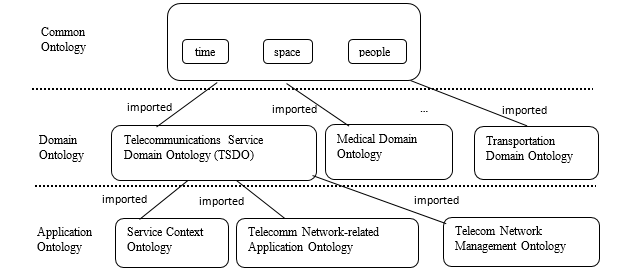 Figure 2 Layered ontology modeling approach
Figure 2 Layered ontology modeling approach
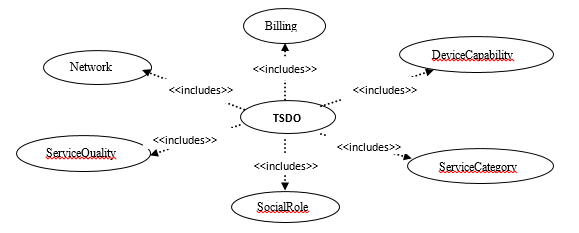 Figure 3 A framework for telecommunication service domain ontology
Figure 3 A framework for telecommunication service domain ontology
The concrete domain ontology can be shared by the different domain–related application ontologies. For example, telecommunication service domain ontology can be used to create the service context ontology, network management ontology, etc. Furthermore, a modular modeling approach is considered in the construction of telecommunication service domain ontology to ensure stronger cohesion and loose coupling in the correlation of concepts. The framework for the service domain ontology shown in figure 3 using UML use-case diagram comprises six sub-ontologies, including Device Capability Ontology, Network Ontology, Service Role Ontology, Billing Ontology, Service Quality Ontology, and Service Category Ontology. Features of the sub-ontologies are presented on Table 2. The various associations between the different levels of context information can be described and represented through semantic web languages and appropriate vocabularies.
Table 2 Features of the telecommunication service domain sub-ontologies
| Sub-ontology | Feature |
| Network | Specifies network concepts, network categories, features and relationships between various networks e.g. mobile network, fixed network, wireless network, wired network, GSM, CDMA, WCDMA and WLAN, etc. |
| Device Capability | Defines concepts about device software, hardware, browser, and network characteristics supported by device. |
| Service Quality | Defines end-to-end QoS guarantee based on technical characteristics, e.g. access network QoS, core network QoS, and user’s quality of experience such as call setup delay, throughput, etc. |
| Service Category | Defines relationship between various service classifications, like voice service, messaging service, data service, download service, browsing service, value-added service, etc. |
| Service Role | Describes the stakeholder’s concept of the service supply chain, e.g. service provider, content provider, network operator, service user, etc. |
| Billing | Defines payment methods, service charge, and account balance concepts e.g. prepaid or postpaid payment; time-based, volume-based, event-based, or content-based service charge; bonus, etc. |
3.1. System architecture for social roles ontology
Ideally, context-aware systems make use of context models expressed as ontologies to formalize and limit the notion of context. Since what is considered relevant information differs from one domain to another, effective use of this information is required. OWL was used to explicitly formalize the properties and structure of TSDO contextual information to guarantee common semantic understanding among different architectural components. OWL has well-defined syntax, formal semantics, reasoning support, and enhances information retrieval and interoperability. The developed mobile users’ social roles ontology is shown in figure 4. Each layer indicates a representation of a state supporting the provision of the mobile service. The seven layers are represented by classes in the ontology developed with domain experts (except mobile device manufacturers), which include mobile operators, content providers and described using OWL. This enhances a wider level of interoperability and provides a more generic vocabulary on describing properties and classes with richer semantics than widely deployed RDF.
Table 3 Social roles and interaction characteristics
| User social role | Service category | Interaction medium |
| Speaking | voice services only | Voice interface (mouthpiece, earpiece), wireless Bluetooth |
| Composing | messaging service in addition to voice | Keyboard, stylus, lightpen |
| Photography | snapshot service in addition to voice and messaging | Camera, colour display |
| Surfing | data and browsing service in addition to snapshot, messaging and voice services | GPRS, bluetooth, bandwidth, browser |
| Audio recording/ listening
|
audio services in addition to surfing | Media player, speaker, bluetooth |
| Video recording/watching | video services in addition to audio services | Media player, video player, memory card |
This paper assumes that an individual using a mobile device is attached to a role that might be changed due to context whether social or locational. This role depends on the task at hand, the interaction capability of the device as well as the usage habits and interaction styles of the user. To resolve the critical design challenge of integrating the characteristics of a social setting with the services characteristics and the interaction styles available, we developed a model of service ontology that describes the social role with prescribed characteristics as well as specific interaction characteristics in order to address a value added mobile content provision. The model can support knowledge representation and communication interoperability with regards to different aspects of context. Third Generation Partnership Project (3GPP) categorization of the classes of service provided on a mobile communications system is considered. This includes conversational (voice), interactive (web browsing, interactive chats), background (SMS, FTP, Email), and streaming (audio/video conferencing) services. However, for clarity of ontology development, Table 3 describes the four service classes based on the proposed social roles and the related characteristics. The service category ontology defines the relationship between various telecommunications services, like voice service, messaging service, data service, download service, browsing service, video conference service, and value-added service.
Figure 4 presents the ontology of users’ social roles, sub-ontology of the telecommunication service domain ontology. From the ontology representation, answers to basic competency questions are obtained. The competency questions include:
Who uses the ontology?
Who performs social role?
How is social role carried out?
What is a social role?
What determines the social role to be performed?
Deductions can reasonably be made from the following rules. The capability of the device in use defined by its interaction medium or service categories determines its social roles and its adaptation in a mobile computing environment. Thus, the capability of the device is defined by rules 1 to 6 as part of the ontology.
Rule 1: IF Mobile_device has Voice-interface THEN social-role is Speaking.
Rule 2: IF Mobile_device has Message-interface THEN social-role is Messaging.
Rule 3: IF Mobile_device has Photo-interface THEN social-role is Photography.
Rule 4: IF Mobile_device has Surfing-interface THEN social-role is Surfing.
Rule 5: IF Mobile_device has Audio-interface THEN
social-role is Audio-recording-and-listening.
Rule 6: IF Mobile_device has Video-interface THEN
social-role is Video-recording-and-watching.
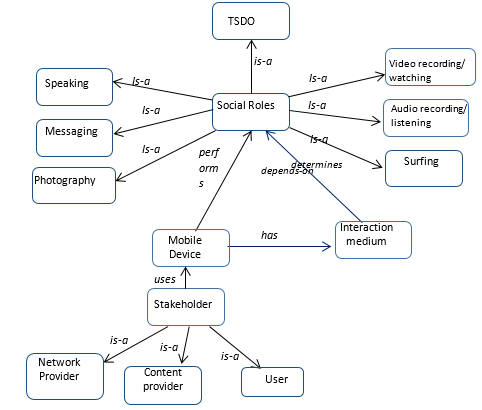 Figure 4 Mobile users’ social role ontology
Figure 4 Mobile users’ social role ontology
Devices with combined service categories can assume more than one service role. Hence, the number of service roles a device can perform determines its adaptation in mobile environments which, in this regard, is the interaction medium. Rules 7 to 12 in the ontology give the combined service categories as the antecedent and the resulting social roles as the conclusion.
Rule 7: IF InteractionMediumCategory include Voice-interface only THEN Speaking
Rule 8: IF InteractionMediumCategory include Message-interface AND Voice-interface THEN Messaging
Rule 9: IF InteractionMediumCategory include Photo-interface AND Message-interface AND Voice-interface THEN Photography
Rule 10: IF InteractionMediumCategory include Surfing-interface AND Photo-interface AND Message-interface AND Voice-interface THEN Surfing
Rule 11: IF InteractionMediumCategory include Audio-interface AND Surfing-interface AND Photo-interface AND Message-interface AND Voice-interface THEN Audio-recording-and-listening.
Rule 12: IF InteractionMediumCategory include Video-interface AND Audio-interface AND Surfing-interface AND Photo-interface AND Message-interface AND Voice-interface THEN Video-recording-and-watching.
Rules 7 to 12 depict the relationships among the various social roles as follows:
Video-recording-and-watching É Audio-recording-and-listening É Surfing É Photography É Messaging É Speaking.
This means that:
Speaking Ì Messaging Ì Photography Ì Surfing Ì Audio-recording-and-listening Ì Video-recording-and-watching.
This logical conclusion shows the requirement for social role of a device which determines its level of adaptation in a mobile environment.
The proposed framework for providing context-aware personalized web services is shown in figure 5. It indicates that the User Device is a smart device which is equipped with the context-aware sensors that gather entered user’s request and acquire the necessary contextual information. Context Acquisition and Assimilation module is to capture contextual information, inserted, captured or stored, and manages their heterogeneity while Context Processing and Reasoning module is responsible for reasoning and deducing new situations from OWL representations of context and inference rules. Service Adaptation module allows content providers to adapt services to context at runtime based on services from situations derived by context processing and reasoning. In order to infer high level context from low level one, the context ontology is used as input to context processing and reasoning module. It is characterized by a two-level hierarchy: the general, domain independent and the domain dependent, application specific levels. The first level may specify the user’s profile and preferences, service requested, activity, device and environment related properties.
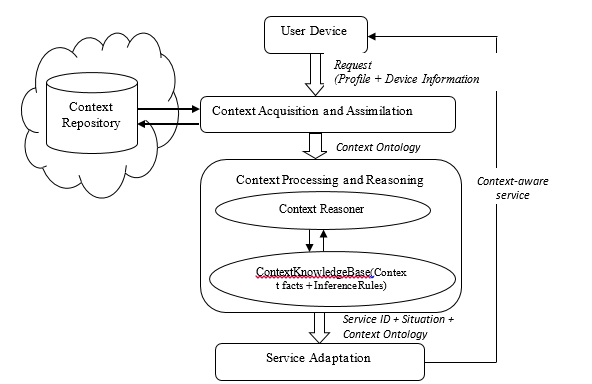 Figure 5 Framework for context-aware web services provision
Figure 5 Framework for context-aware web services provision
4. Model implementation
Next, we implement the ontology model for social roles that will enhance the provision of value added mobile web services. Implementing the social role ontology in Protégé allows us to determine whether a mobile device with its interaction medium is fit for a social role or not. The following axioms define the rules required to reason with facts in the ontology. Rules 1 to 12 of the previous section are represented in Ax.1 to Ax.12 using first order logic as the language of representation with predicates reified as entities or objects. The notations md, sr and im mean mobile device, social role and interaction medium respectively with has and is as predicates.
Ax.1: “md, sr$im. has(md, im(Voice)) Þ is(sr, Speaking)
Ax.2: “md, sr$im. has(md, im(Message)) Þ is(sr, Messaging)
Ax.3: “md, sr$im. has(md, im(Photo)) Þ is(sr, Photography)
Ax.4: “md, sr$im. has(md, im(Surfing)) Þ is(sr, Surfing)
Ax.5: “md, sr$im. has(md, im(Audio)) Þ is(sr, Audio-recording-and-listening)
Ax.6: “md, sr$im. has(md, im(Video)) Þ is(sr, Video-recording-and-watching)
Ax.7: “md, im, sr. has(md, im(Voice)) Þ is(sr, Speaking)
Ax.8: “md, im, sr. has(md, im(Voice Ù Message)) Þ is(sr, Messaging)
Ax.9: “md, im, sr. has(md, im(Voice Ù Message Ù Photo))Þ is(sr, Photography)
Ax.10: “md, im, sr. has(md, im(Voice Ù Message Ù Photo Ù Surfing)) Þ is(sr, Surfing)
Ax.11: “md, im, sr. has(md, im(Voice Ù Message Ù Photo Ù Surfing Ù Audio))Þis(sr, Audio-recording-and-listening)
Ax.12: “md, im, sr. has(md, im(Voice Ù Message Ù Photo Ù Surfing Ù Audio Ù Video))
Þis(sr, Video-recording-and-watching)
Upon addition of these axioms to the ontology, some of the competency questions earlier stated will be answered.
The implementation of the service role ontology using Protégé results in the class hierarchy given in figure 6. From the class hierarchy, three main classes are defined. They areSocialRole, Stakeholder andMobileDevice.The usage of the SocialRole class is described. The SocialRole class has six sub-classes which include Speaking, Messaging, Photography,Surfing,AudioRecordingListening, and VideoRecordingWatching. The Stakeholders class has ContentProvider, NetworkProvider and the User as its sub-classes. The MobileDevice class is defined by the BrandNameand InteractionMediumas its properties. The InteractionMedium obtained from Table 3 is classified according to the interface it provides and the classes are VoiceInterface,MessageInterface, PhotoInterface, SurfingInterface, AudioInterface and VideoInterface. Sample device types, brand names interaction medium are specified in table 4. The classes are linked together with the relations shown in the ontology in figure 4 and defined as the object properties and shown in the implementation interface in figure 7. These object properties include has, is-a, uses, performs, depends-on and determines.
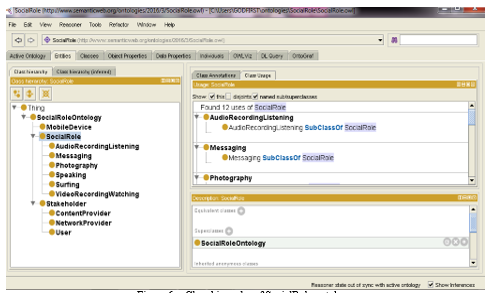 Figure 6 Class hierarchy of SocialRole ontology
Figure 6 Class hierarchy of SocialRole ontology
Table 4. Sample Brand Name of Phones and Interaction Medium
| Brand Name | Phone Type | Voice
Interface |
Message Interface | Photo Interface | Surfing Interface | Audio Interface | Video Interface |
| Nokia | 3310 (Dual SIM) | Yes | Yes | Yes | No | Yes | No |
| 2626 | Yes | Yes | No | Yes | Yes | No | |
| Tecno | Spark Plus K9 | Yes | Yes | Yes | Yes | Yes | Yes |
| T401 (Dual SIM) | Yes | Yes | Yes | Yes | Yes | Yes | |
| T401 (Triple SIM) | Yes | Yes | Yes | Yes | Yes | Yes | |
| T349 | Yes | Yes | Yes | No | No | No | |
| iMose | M3i (Dual SIM) | Yes | Yes | Yes | No | Yes | Yes |
| AIEK | E1 | Yes | Yes | No | No | Yes | No |
| Fero | K24101 | Yes | Yes | Yes | Yes | Yes | Yes |
| Bontel | 3310 | Yes | Yes | Yes | No | No | No |
| Generic | 3D Animal Print | Yes | Yes | Yes | Yes | Yes | Yes |
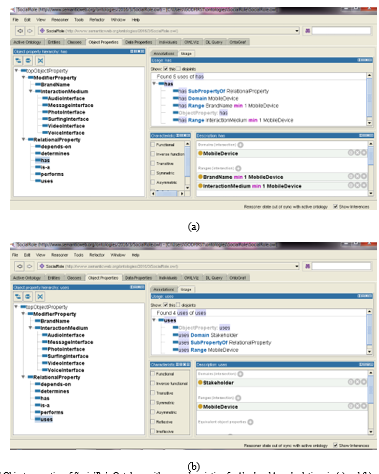 Figure 7 Object properties of SocialRole Ontology with usage description for ‘has’ and ‘uses’ relations in (a) and (b) respectively
Figure 7 Object properties of SocialRole Ontology with usage description for ‘has’ and ‘uses’ relations in (a) and (b) respectively
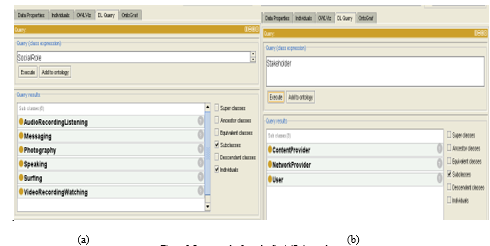 Figure 8 Query results from the SocialRole ontology
Figure 8 Query results from the SocialRole ontology
A sample query on the SocialRole ontology gives the results from the knowledge base as shown in figure 8 (a) social roles and (b) stakeholder
5. Conclusion
The advancement with ubiquitous computing technologies significantly enhance people’s ability to communicate, learn, relax, and be entertained in a safe and comfortable environment such as home, office, campus, library, classroom, laboratory, market, or church. The proposed framework for mobile phone services provisioning supporting context-aware system performs reasoning over contexts to support dynamic adaptation to changing environment. This guarantees the quality of the context, deduce implicit information and pass decisions about the actions to be triggered. The paper shows that ontology-based context-aware model can provide situation and social-aware services in much pervasive way for different domains. This provides useful tool for development and deployment of needed applications by content developers and service providers to mobile users. The end effect will be provision of satisfied mobile users’ quality of service and quality of experience requirements anytime, anywhere.
- Farley, P. and Capp, M. (2005) ‘Mobile web services’, BT Technology Journal, 23(2), 202-213.
- Palen, L., Salzman, M. and Youngs, E. (2000) ‘Going wireless: behaviour and practice of new mobile phone users’, Proceedings of the 2000 ACM Conference on Computer Supported Cooperative Work, ACM Press, New York, USA, 201-210.
- Tamminen, S., Oulasvirta, A, Toiskallio, K. and Kankainen, A. (2004) ‘Understanding mobile contexts’, Personal and Ubiquitous Computing, 8(2), 135-143.
- Skillen KL., Chen L., Nugent C.D., Donnelly M.P., Burns W., Solheim I. (2012) Ontological User Profile Modeling for Context-Aware Application Personalization. In: Bravo J., López-de-Ipiña D., Moya F. (eds) Ubiquitous Computing and Ambient Intelligence. UCAmI 2012. Lecture Notes in Computer Science, vol 7656. Springer, Berlin, Heidelberg.
- Pruitt, J. and Adlin, T. (2006) The Persona Lifestyle: Keeping People in mind throughout Product Design, 1st, Morgan Kaufmann, San Francisco.
- Anderson, P. and Blackwood, A. (2004) Mobile and PDA technologies and their future use in education, JISC Technology and Standards Watch, Bristol, UK.
- Kamberov, R. (2016). Using social paradigms in smart cities mobile context-aware computing. 11th IEEE Iberian Conference onInformation Systems and Technologies (CISTI), (1-5).
- Ogata, H. and Yano, Y. (2004) ‘Context-aware support for computer-supported ubiquitous learning’, Proceedings of IEEE WMTE Conference, Taoyuan, Taiwan, Computer Society Press, 27-34.
- Rogers, Y., Price, S., Randell, C., Fraser, D. S., Weal, M. and Fitzpatrick, G. (2005) ‘Ubi-learning integrating indoor and outdoor learning experiences’, Communications of the ACM, 48(1), 55-59.
- Meier, R and Lee, D. (2011) ‘Context-aware pervasive services for smart cities’, Ubiquitous Developments in Ambient Computing and Intelligence: Human-Centered Applications, IGI Global, 1, 1-6.
- Khan, Z., Kiani, S. L. and Soomro, K. (2014), ‘A framework for cloud-based context-aware information services for citizens in smart cities’, Journal of Cloud Computing: Advances, Systems and Applications, 3(14), 1-17.
- Schmidt, C. (2011) ‘Context-aware computing’, Berlin Inst. Technology Tech, 1-9, retrieved from
http://diuf.unifr.ch/pai/education/2002_2003/seminar/winter/ubicomp/02_Pervasive.pdf/ - Berners-Lee, T., Hendler, J. and Lassila, O. (2001) ‘The Semantic Web’, Scientific Americana, 284(5), 34-43.
- Lassila, O. and Adler, M. (2003) ‘Semantic gadgets: Ubiquitous computing meets the semantic web’, In Dieter Fensel et al., (Eds.), Spinning the Semantic Web, MIT Press, 363-376.
- Brown, G., Bull, J. and Pendlebury, M. (1997)
- Chen, G. and Kotz, D. (2000) A survey of context-aware mobile computing research, Tech. Rep. TR2000-381, Darthmouth.
- Schilit, B. and Theimer, M. (1994) ‘Disseminating active map information to mobile hosts’, IEEE Network, 8(5), 22-32.
- Dey, A. K. (2001) ‘Understanding and using context’, Personal and Ubiquitous Computing, 5(1), 4-7.
- Musumba, G. W. and Nyongesa, H. O. (2013) ‘Context awareness in mobile computing: A review’, International Journal of Machine Learning Applications, 2(1), 1-10.
- Dey, A. K. and Abowd, D. (2000), ‘Towards a better understanding of context and context-awareness’, Proceedings of the 2000 Conference on Human Factors in Computing Systems (CHI 2000) in the workshop of the What, Who, Where, When and How of Context-Awareness, The Hague, The Netherlands, 371.
- Prekop, P. and Burnett, M. (2003) ‘Activities, context and ubiquitous computing’, Computer Communications, 26(11), 1168-1176.
- Bardram, J. E. and Hansen, T. R. (2010) ‘Context-based workplace awareness’, Computer Supported Cooperative Work (CSCW), 19, 105-138.
- Hong, J. H., Yang, S. I. and Cho, S. B. (2010) ‘ConaMSN: A context-aware messenger using dynamic Bayesian networks with wearable sensors’, Expert Systems with Applications, 37(6), 4680-4686.
- Strang, T. and Linnhoff-Popien, C. (2004), ‘A context modeling survey’, Proceedings of the First International Workshop on Advanced Context Modeling, Reasoning and Management at Ubicomp 2004, Nottingham, UK, 34-41.
- [25] Ahmed, S. and Parsons, D. (2011), ‘ThinknLearn: An ontology-driven mobile web application for science enquiry based learning’, Proceedings ofthe 7th International Conference on Information Technology and Applications (ICITA 2011), IEEE Computer Chapter NSW, Sydney, Australia, 255-260.
- Protégé-OWL Editor and Application Programming Interface. [online] http://protege.stanford.edu/ (Accessed 12 February, 2016).
- Veijalainen, J. (2008) ‘Mobile ontologies: Concepts, development, usage, and business potential, International Journal on Semantic Web and Information Systems, 4(1), 20-34.
Citations by Dimensions
Citations by PlumX
Google Scholar
Scopus
Crossref Citations
- Keqiang Shi, Shanhui Liu, Zengqiang Zhang, Song Qian, Han Zhang, "Modeling Method of Guide Roller Manufacturing Information Based on Ontology Modeling." In Innovative Technologies for Printing and Packaging, Publisher, Location, 2023.
No. of Downloads Per Month
No. of Downloads Per Country
